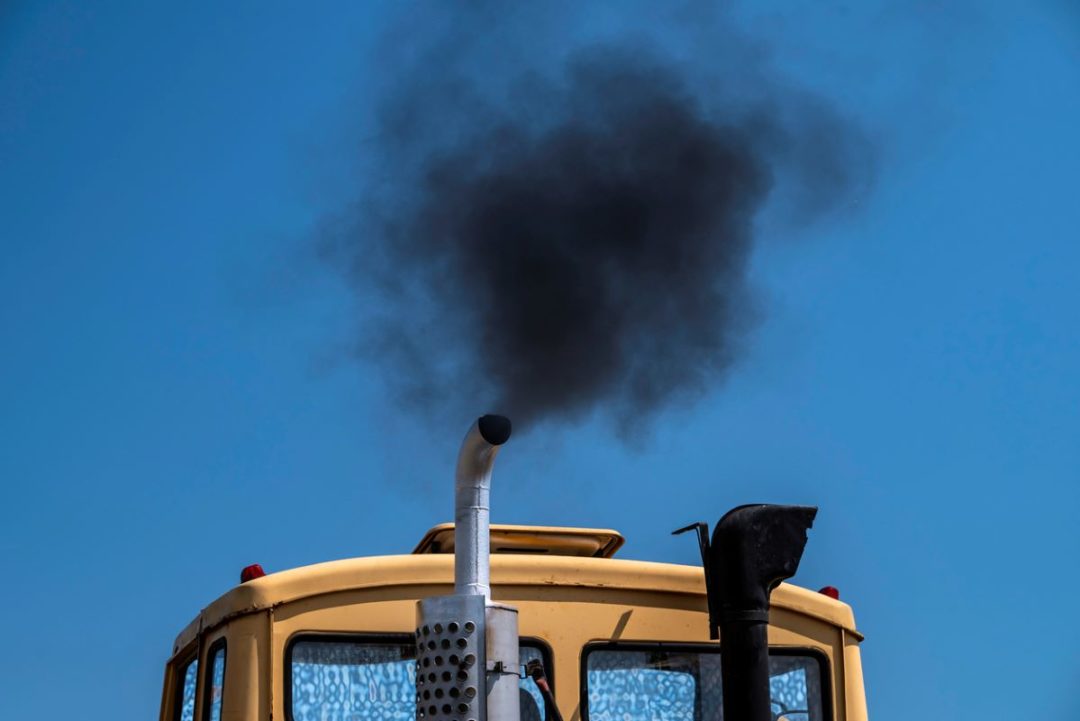
Visit Our Sponsors |
|
|
|
|
|
|
|
|
|
|
|
|
|
|
|
|
|
|
|
|
|
|
|
|
|
|
|
|
|
|
|
|
|
|
|
|
|
|
|
|
|
|
|
|
|
|
|
|
|
|
|
|
|
|
|
|
|
|
|
|
|
|
|
|
|
|
|
|
|
|
|
|
|
|
|
|
|
|
|
|
|
|
|
|
|
|

Photo: iStock.com/Tramino
The U.S. Environmental Protection Agency (EPA) announced March 29 final national greenhouse gas pollution standards for heavy-duty vehicles, such as freight trucks and buses, for model years 2027 through 2032. But at least one industry body has pushed back against the new rules.
According to The New York Times, the EPA projects the new rule could mean that 25% of new long-haul trucks, the heaviest on the road, and 40% of medium-size trucks, like box trucks and landscaping vehicles, could be nonpolluting by 2032. Today, fewer than 2% of new heavy trucks sold in the United States fit that bill.
The EPA said the “Greenhouse Gas Emissions Standards for Heavy-Duty Vehicles - Phase 3” standards will avoid 1 billion tons of greenhouse gas emissions and provide $13 billion in annualized net benefits to society related to public health, the climate, and savings for truck owners and operators. The final standards will also reduce dangerous air pollution, especially for the 72 million people in the United States who live near truck freight routes, bear the burden of higher levels of pollution, and are more likely to be people of color or come from low-income households.
Clean Freight Coalition (CFC) executive director Jim Mullen strongly criticized the standards in a March 29 statement. “Rather than mandating a new technology that carries with it exorbitant costs and operational concerns, policymakers should support lower carbon alternatives to diesel fuel that are currently commercially viable (such as biodiesel and renewable diesel)," he said. "These lower-carbon fuels will allow EPA to make progress on emissions today, while the industry implements longer-term
“In finalizing these emissions standards for heavy-duty vehicles like trucks and buses, EPA is significantly cutting pollution from the hardest working vehicles on the road,” said EPA Administrator Michael S. Regan. “Building on our recently finalized rule for light- and medium-duty vehicles, EPA’s strong and durable vehicle standards respond to the urgency of the climate crisis by making deep cuts in emissions from the transportation sector.”
“EPA’s standards complement President Biden’s unprecedented investment in our workers and communities to reduce harmful emissions, while strengthening our manufacturing capacity for the transportation technologies of the future,” said President Biden’s National Climate Advisor Ali Zaidi. “By tackling pollution from heavy-duty vehicles, we can unlock extraordinary public health, climate, and economic gains.”
But the CFC said the math just doesn't add up, pointing to its recent study it says demonstrated that fully electrifying the nation’s medium- and heavy-duty commercial vehicles will cost motor carriers $620 billion in charging infrastructure alone. Further, that does not include the vehicle cost, which the CFC said increases by 2-3 times compared to a diesel truck. "For example, today’s diesel class 8 truck costs roughly $180,000 compared to an electric truck’s price tag of $400,000, and for motor coaches, today’s diesel costs $600,000 compared to $1.5million for battery electric – costs that will ultimately be borne on the backs of consumers," the statement said.
“On top of the costs to the truck and bus industries, utilities and the government will need to invest $370 billion to upgrade their networks and the power grid to meet the demands of the commercial vehicle industry alone, putting the price tag for an electric supply chain at nearly $1trillion before one battery-electric commercial vehicle is purchased," the statement went on.
The new standards were welcomed by Environmental Defense Fund's executive director, Amanda Leland. “It all adds up to significant progress in addressing the climate crisis and giving our children a brighter, safer, healthier future,” said Leland. “That is critically important to me, as a mom. I am grateful to everyone who has helped move us this far in the right direction, and I look forward to working together as we continue toward our destination – a pollution-free future for all.”
RELATED CONTENT
RELATED VIDEOS
Timely, incisive articles delivered directly to your inbox.

.jpg?height=100&t=1714138927&width=150)





